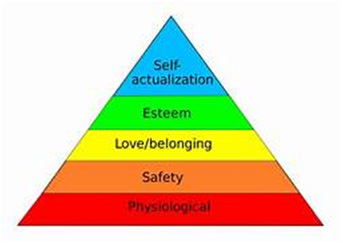Warrington Preparatory Academy is proof that good things can come from tragic events. In 2010, states in the Gulf of Mexico Panhandle were devastated by the Deepwater Horizon oil spill. Environmental and economic hardships have been slowly overcome thanks in part to financial resources through nonprofit and philanthropic support. Warrington is a victorious story of a school with a dynamic vision for business partnerships and high-tech, personalized learning. EduSolve worked with the leadership team to research, cultivate, and align the goals of the Board of Directors with philanthropic resources as detailed in this article. The result? EduSolve secured a $7M dollar grant award to completely retrofit the school into a learning innovation center.
American Dreams Do Come True, Lowell, MA
Unlocking Leadership Potential: How Executive Coaching Empowers School Leaders for Success
In today’s rapidly changing educational landscape, school leaders face unprecedented pressure to unlock student potential and drive school improvement. But where can they find the support and guidance to navigate these challenges and thrive? Enter executive coaching, a powerful tool that’s empowering school leaders to reach new heights.
What is Executive Coaching?
Forget generic training programs. Executive coaching is a personalized, collaborative approach that unlocks an individual’s leadership potential. Coaches work one-on-one with school leaders to understand their unique needs, challenges, and aspirations.
Why do School Leaders Need It?
School leaders juggle countless responsibilities – from curriculum development to teacher management and community engagement. Executive coaching provides a confidential space for them to address these complexities and develop the multifaceted skillset needed for success.
Benefits of Executive Coaching for School Leaders:
- Sharpened Leadership Skills: Improve communication, decision-making, and conflict resolution to motivate and inspire.
- Strategic Vision & Planning: Craft a clear vision for your school and develop actionable plans to achieve it.
- Enhanced Emotional Intelligence: Build stronger relationships with staff, parents, and students through improved communication and empathy.
- Stress Management & Work-Life Balance: Develop effective strategies to combat stress and maintain a healthy work-life balance.
- Continuous Professional Development: Stay ahead of the curve with access to the latest educational trends and strategies.
Real-World Impact:
Imagine a school leader who, through coaching, identifies communication gaps hindering progress. Working with a coach, they develop strategies to address these issues. The result? Improved staff morale, a more collaborative environment, and ultimately, better student outcomes.
Investing in Your Future:
Executive coaching is a strategic investment in the future of your school. By empowering your leaders to overcome challenges, drive positive change, and create thriving environments, you pave the way for student success and a brighter future for all.
Also Read:
Elevate Your Career with the Best Online Executive Leadership Training Programs
In today’s fast-paced and competitive business world, strong leadership skills are crucial for success. Whether you are already in a leadership role or aspiring to become one, investing in executive leadership training can greatly enhance your career prospects. Executive leadership training programs provide individuals with the knowledge, skills, and tools necessary to effectively lead and inspire teams, make strategic decisions, and drive organizational growth.
One of the key reasons why executive leadership training is so important is that it helps individuals develop a deep understanding of leadership principles and practices. Through comprehensive and specialized training, participants learn about different leadership styles, effective communication techniques, conflict resolution strategies, and how to motivate and inspire their teams. By gaining a solid foundation in these areas, leaders are better equipped to navigate the complex challenges they may encounter in their roles.
Another important aspect of executive leadership training is the opportunity it provides for personal and professional growth. Through self-reflection and feedback from trainers and peers, participants are able to identify their strengths and weaknesses as leaders. They can then work on enhancing their strengths and addressing areas for improvement. This self-awareness and continuous learning approach is instrumental in developing well-rounded leaders who are adaptable, open to feedback, and constantly striving to improve.
Furthermore, executive leadership training programs often include experiential learning opportunities, such as case studies, simulations, and real-world projects. These practical exercises allow participants to apply their newly acquired knowledge and skills in a safe and supportive environment. By engaging in hands-on activities, leaders can gain valuable insights, learn from their mistakes, and develop their problem-solving abilities. This experiential learning approach helps leaders build confidence and competence in their decision-making capabilities.
Benefits of online executive leadership training
Online executive leadership training programs offer numerous benefits that make them an attractive option for busy professionals. These programs provide the flexibility to learn at your own pace and from the comfort of your home or office. With the convenience of online learning, you can access course materials and participate in interactive discussions whenever and wherever it suits you. This flexibility is particularly valuable for individuals with demanding work schedules or other personal commitments.
Another advantage of online executive leadership training is the opportunity to learn from top experts and industry leaders from around the world. Many online programs collaborate with renowned universities, professional organizations, and industry experts to deliver high-quality content and insights. By learning from these experts, you can gain valuable knowledge and perspectives that can directly impact your leadership skills and enhance your professional network.
Additionally, online executive leadership training programs often include a diverse range of participants from various industries and backgrounds. This provides a unique opportunity to learn from the experiences and perspectives of others. Through collaborative discussions, group projects, and networking events, participants can expand their horizons, gain fresh insights, and build valuable connections. This diverse and inclusive learning environment fosters creativity, innovation, and cross-industry learning.
Moreover, online best executive leadership training programs often offer ongoing support and resources even after the completion of the program. This can include access to a network of alumni, exclusive webinars, mentoring opportunities, and additional learning materials. Having access to these resources can be invaluable in sustaining and further developing the skills and knowledge gained during the program. It ensures that the benefits of the training are long-lasting and can be continuously applied in your career.
How to choose the best online executive leadership training program

With the growing popularity of online executive leadership training programs, there are now numerous options available in the market. Choosing the right program can be a daunting task, but with careful consideration, you can find the best fit for your needs and goals. Here are some key factors to consider when selecting an online executive leadership training program:
- Accreditation and Reputation: Ensure that the program is accredited by a reputable organization or university. Look for reviews and testimonials from past participants to gauge the program’s effectiveness and quality.
- Curriculum and Course Structure: Evaluate the program’s curriculum and course structure to ensure it aligns with your learning objectives. Check if the program covers the essential leadership topics and offers a mix of theoretical and practical learning opportunities.
- Faculty and Expertise: Research the qualifications and expertise of the program’s faculty members. They should have extensive experience in leadership development and possess relevant industry knowledge.
- Delivery Format and Flexibility: Consider the delivery format of the program and whether it suits your learning preferences. Look for programs that offer a flexible schedule and allow you to access course materials and resources at your convenience.
- Engagement and Interaction: Assess the level of interaction and engagement offered by the program. Look for opportunities to connect with instructors and fellow participants through live webinars, discussion forums, and networking events.
- Support and Resources: Investigate the support and resources provided by the program. This can include access to mentoring, alumni networks, additional learning materials, and ongoing support after program completion.
Taking the time to research and evaluate different online executive leadership training programs will ensure that you make an informed decision and select a program that aligns with your career aspirations and learning preferences.
Top online executive leadership training programs
When it comes to online executive leadership training programs, several reputable options consistently receive positive reviews from participants. These programs are known for their high-quality content, experienced faculty, and impactful learning experiences. Here are some of the top online executive leadership training programs:
- Harvard Business School Online – Leadership Principles: This program offered by Harvard Business School Online provides participants with a solid foundation in leadership principles and practices. It covers topics such as emotional intelligence, decision-making, and motivating teams. The program combines self-paced modules, interactive simulations, and peer discussions to create a comprehensive learning experience.
- MIT Sloan School of Management – Executive Leadership for Engineers: Designed specifically for engineers and technical professionals, this program offered by MIT Sloan School of Management focuses on developing leadership skills in a technical context. Participants learn how to effectively manage teams, drive innovation, and navigate complex organizational challenges. The program emphasizes practical application through real-world case studies and interactive exercises.
- Wharton Executive Education – Leadership and Management Certificate: Wharton School of the University of Pennsylvania offers an online leadership and management certificate program. This comprehensive program covers a wide range of leadership topics, including strategic thinking, negotiation, and leading change. Participants learn from Wharton faculty through a combination of online lectures, group discussions, and case studies.
- INSEAD – Leadership Development Program: INSEAD offers a highly regarded online leadership development program that aims to develop leaders who can drive organizational success in a global context. The program focuses on enhancing self-awareness, building leadership skills, and fostering a global mindset. Participants engage in interactive discussions, virtual team projects, and receive personalized coaching.
- These are just a few examples of the top online executive leadership training programs available. Each program offers a unique learning experience, so it’s important to review the program details and select the one that best aligns with your specific needs and goals.
Key features to look for in an online executive leadership training program
When evaluating online executive leadership training programs, it’s important to consider certain key features that can enhance your learning experience and ensure maximum value. Here are some key features to look for in an online executive leadership training program:
- Interactive Learning: Look for programs that offer interactive learning experiences, such as live webinars, group discussions, and case studies. These activities promote active engagement and application of concepts, enhancing your understanding and retention of the material.
- Real-world Application: A strong focus on real-world application is crucial for effective leadership training. Programs that include practical exercises, simulations, and projects allow you to apply your learning in a realistic context, preparing you for real-life leadership challenges.
- Diverse Perspectives: Seek programs that provide exposure to diverse perspectives and experiences. Learning from a diverse group of instructors and participants can broaden your horizons, challenge your assumptions, and foster a more inclusive leadership approach.
- Personalized Feedback and Coaching: Look for programs that offer personalized feedback and coaching to help you identify areas for improvement and develop an actionable plan for growth. This individualized support can greatly enhance your leadership development journey.
- Networking Opportunities: Consider programs that provide networking opportunities with fellow participants, instructors, and industry experts. Building a strong professional network can open doors to new opportunities, mentorship, and collaboration.
- Flexibility and Accessibility: Ensure that the program offers flexibility in terms of schedule and accessibility. Look for programs that allow you to learn at your own pace and provide easy access to course materials and resources.
By prioritizing these key features, you can select an online executive leadership training program that offers a comprehensive and enriching learning experience tailored to your needs.
Tips for maximizing the value of your online executive leadership training experience
To derive maximum value from your online executive leadership training experience, consider the following tips:
- Set Clear Learning Objectives: Before starting the program, identify your specific learning objectives and goals. This will help you stay focused and ensure that you are actively working towards your desired outcomes.
- Engage Actively: Actively participate in discussions, group activities, and networking opportunities provided by the program. Engaging with instructors and fellow participants will enhance your learning experience and allow you to gain diverse perspectives.
- Apply Learning to Real-life Situations: Continuously seek opportunities to apply the concepts and skills learned in the program to real-life situations. This will reinforce your understanding and help you develop practical leadership abilities.
- Reflect and Seek Feedback: Regularly reflect on your progress and seek feedback from instructors, peers, and mentors. This will help you identify areas for improvement and refine your leadership approach.
- Build a Support Network: Connect with fellow participants, instructors, and industry experts to build a strong support network. This network can provide guidance, mentorship, and collaboration opportunities beyond the duration of the program.
- Continuously Learn and Grow: View your executive leadership training program as a starting point for continuous learning and growth. Stay updated on the latest leadership trends and research, and seek additional development opportunities to further enhance your skills.
By following these tips, you can maximize the value of your online executive leadership training experience and ensure a lasting impact on your career trajectory.
Resources for further executive leadership development
In addition to online executive leadership training programs, there are several other resources available for individuals looking to further develop their leadership skills. These resources can complement your training and provide ongoing support for your leadership development journey. Here are some valuable resources to consider:
- Books: Numerous books on leadership offer valuable insights and practical guidance. Some recommended titles include “Leaders Eat Last” by Simon Sinek, “Dare to Lead” by Brené Brown, and “The Five Dysfunctions of a Team” by Patrick Lencioni.
- Podcasts: Podcasts are a convenient and accessible way to learn from thought leaders and industry experts. Some popular leadership podcasts include “The Leadership Podcast” by Jan Rutherford and Jim Vaselopulos, “HBR IdeaCast” by Harvard Business Review, and “The Tony Robbins Podcast.”
- Professional Associations: Joining professional associations related to your industry or leadership can provide access to valuable resources, networking events, and leadership development opportunities. Examples include the Association for Talent Development (ATD), the Project Management Institute (PMI), and the Society for Human Resource Management (SHRM).
- Webinars and Online Workshops: Many organizations and leadership development experts offer webinars and online workshops on various leadership topics. These can be a cost-effective way to gain new insights and expand your knowledge.
- Executive Coaching: Consider engaging an executive coach who can provide personalized guidance and support in your leadership development journey. A coach can help you identify blind spots, set goals, and hold you accountable for continuous growth.
By leveraging these resources, you can further enhance your leadership skills and continue your professional development beyond the scope of an online executive leadership training program.
Also Read:
30 Social Emotional Learning Activities for the Classroom
Social emotional learning activities: Social-emotional learning (SEL) is the process of developing self-awareness, self-management, social awareness, relationship skills, and responsible decision-making skills that are essential for success in school, work, and life. SEL is important in the classroom because it helps students to:
- Understand and manage their emotions
- Build and maintain healthy relationships
- Make responsible decisions
- Resolve conflict peacefully
- Cope with stress and adversity
- Thrive academically
Benefits of SEL for students
Research has shown that SEL has several benefits for students, including:
- Improved academic achievement
- Reduced behavioral problems
- Increased attendance and graduation rates
- Improved mental and physical health
- Stronger social relationships
- Increased self-esteem and confidence
How to incorporate SEL into your classroom
There are many ways to incorporate social emotional learning activities into your classroom. Here are a few tips:
- Create a positive and supportive classroom climate.
- Model SEL skills for your students.
- Teach SEL skills explicitly.
- Provide opportunities for students to practice SEL skills.
- Integrate SEL activities into your academic curriculum.
Here are some examples of how to incorporate SEL into different academic subjects:
- Math: Have students work in pairs or small groups to solve math problems. This helps them to develop their problem-solving and communication skills.
- Science: Have students conduct scientific experiments in groups. This helps them to learn how to work together and collaborate effectively.
- Social studies: Have students research and present on current events. This helps them to develop their critical thinking skills and their ability to communicate their ideas effectively.
- English language arts: Have students write about their personal experiences and feelings. This helps them to develop their self-awareness and their ability to express themselves effectively.
By incorporating SEL into your classroom, you can help your students to develop the skills they need to succeed in school, work, and life.
30 Social Emotional Learning Activities for the Classroom
Here is a list of 30 Social Emotional Learning Activities for the Classroom:
Self-awareness

- Emotion check-in: This is a simple but effective way to help students become more aware of their emotions. At the beginning or end of the day, have students share how they are feeling. This can be done individually, in pairs, or as a class. You can use a variety of prompts to help students get started, such as: “What is one emotion you are feeling right now?” or “How are you feeling about today’s lesson?”
- Feelings journal: Encourage students to keep a journal where they can write about their feelings and experiences. This can help them to better understand and process their emotions. You can provide students with prompts to help them get started, such as: “What made you happy today?” or “What is something that made you feel sad this week?”
- Emotion charades: This is a fun and interactive way to help students learn about different emotions. Have students act out different emotions for the class to guess. You can use a variety of resources to find emotion charade ideas, such as online lists or picture books.
- Mirror game: This game can help students to become more aware of their facial expressions and body language. Have students stand in pairs and face each other. One student makes a facial expression or body language pose and the other student tries to mirror it exactly.
- Self-portrait: Have students draw or paint a self-portrait, focusing on their emotions. This can help them to reflect on their emotions and how they express them. You can encourage students to use different colors and symbols to represent their emotions.
These are just a few examples of self-awareness activities that you can use in your classroom. There are many other resources available online and in libraries. When choosing activities, be sure to consider the age and developmental level of your students.
Self-management

- Deep breathing: Deep breathing is a simple but effective way to calm down and manage stress. Teach your students how to do deep breathing exercises by having them place one hand on their chest and the other hand on their stomach. Then, have them inhale slowly and deeply through their nose, feeling their stomach rise. Next, have them exhale slowly through their mouth, feeling their stomach fall. You can have students practice deep breathing for a few minutes each day, or whenever they are feeling stressed.
- Meditation: Meditation is another great way to calm down and manage stress. Guide your students through a short meditation exercise by having them sit in a comfortable position and close their eyes. Then, have them focus on their breath and try to clear their mind of any thoughts. If any thoughts do come into their mind, have them gently acknowledge the thought and then let it go. You can start by having students meditate for a few minutes each day, and then gradually increase the amount of time they meditate as they become more comfortable with it.
- Visualization: Visualization is a technique that can be used to achieve goals and overcome challenges. Teach your students how to use visualization by having them imagine themselves achieving their goals. For example, if a student is struggling to learn a new math skill, have them imagine themselves successfully solving a math problem. Visualization can also be used to overcome challenges. For example, if a student is feeling nervous about giving a presentation, have them imagine themselves giving a successful presentation.
- Time management: Time management is an important skill for students to learn. Help your students develop strategies for managing their time effectively by teaching them how to set priorities, create schedules, and break down large tasks into smaller steps. You can also provide students with tools to help them manage their time, such as planners and to-do list apps.
- Stress management: Stress is a normal part of life, but it can be harmful if it is not managed effectively. Teach your students different stress management techniques, such as exercise, relaxation techniques, and time management. Exercise is a great way to reduce stress and improve mood. Relaxation techniques, such as deep breathing and meditation, can also help to reduce stress. Time management can also help to reduce stress by helping students to feel more in control of their lives.
Social awareness

- Perspective-taking: Perspective-taking is the ability to see things from another person’s point of view. This is an important skill for social awareness because it helps us to understand and empathize with others. To help students develop perspective-taking skills, you can have them imagine themselves in someone else’s shoes and think about how that person might be feeling. For example, you could have students imagine themselves as a new student in your class or as a character in a book or movie.
- Empathy role-playing: Empathy is the ability to understand and share the feelings of another person. Empathy role-playing is a great way for students to practice responding to others with empathy. To do an empathy role-play, have students choose a situation and then take turns playing different roles. For example, you could have students role-play a situation where one student is feeling sad and the other student is trying to be empathetic.
- Community circle: A community circle is a way for students to share their thoughts and feelings on a given topic in a safe and supportive environment. To do a community circle, have students sit in a circle and choose a topic to discuss. Then, have students take turns sharing their thoughts and feelings on the topic. Be sure to set some ground rules for the community circle, such as respecting each other’s opinions and listening without interrupting.
- Listening practice: Active listening is the ability to listen to someone with the intent to understand what they are saying. It is important for students to be able to listen actively to their peers and teachers in order to build relationships and learn effectively. To help students develop active listening skills, you can have them practice taking turns listening to each other without interrupting. You can also teach students how to ask follow-up questions and summarize what they have heard.
- Conflict resolution: Conflict is a normal part of life, but it is important to be able to resolve conflict in a peaceful and respectful way. Teach students different conflict resolution strategies, such as compromise, mediation, and negotiation. You can also role-play different conflict scenarios with students to help them practice using these strategies.
Relationship skills

- Getting to know you games: Play games that help students get to know each other better and build relationships. For example, you could play games like two truths and a lie, would you rather, or find someone who.
- Cooperative learning activities: Design activities that require students to work together to achieve a common goal. For example, you could have students work together on a group project or solve a puzzle.
- Teamwork challenges: Have students work together to complete challenges, such as building a tower out of spaghetti or solving a puzzle. For example, you could have students compete in a class-wide scavenger hunt or build a
- Communication practice: Give students opportunities to practice communicating effectively in different situations, such as giving a presentation or interviewing for a job. For example, you could have students give presentations on their favorite books or interview each other about their hobbies.
- Social skills training: Teach students specific social skills, such as how to start a conversation, how to give a compliment, and how to refuse an invitation. For example, you could role-play different social scenarios with students or have them practice giving and receiving compliments.
Responsible decision-making

- Decision-making scenarios: Present students with different decision-making scenarios and have them discuss the pros and cons of each option. For example, you could have students discuss whether or not to copy a friend’s homework or whether or not to accept an invitation to a party where they know alcohol will be served.
- Consequences wheel: Create a wheel that shows the consequences of different choices. For example, you could create a consequences wheel for students to use when making decisions about their behavior at school or at home.
- Goal setting: Help students develop and set goals for themselves. For example, you could have students set goals for their academic performance, their behavior, or their social relationships.
- Problem-solving: Teach students different problem-solving strategies. For example, you could teach students the steps involved in solving a problem, such as identifying the problem, brainstorming solutions, and choosing the best solution.
- Decision-making rubric: Develop a rubric to help students assess their decision-making skills. For example, you could create a rubric that assesses students on their ability to identify the problem, brainstorm solutions, and choose the best solution.
These are just a few examples of SEL activities that you can use in your classroom. There are many other resources available online and in libraries. When choosing activities, be sure to consider the age and developmental level of your students.
Here are some additional tips for implementing SEL activities in your classroom:
- Make SEL a regular part of your curriculum. Set aside time each day or week for SEL activities.
- Model SEL skills for your students. Show students how to use SEL skills in your own interactions with them and with other adults.
- Provide students with opportunities to practice SEL skills in a variety of contexts. This could include through games, simulations, role-playing, and real-world experiences.
- Create a safe and supportive classroom environment where students feel comfortable sharing their thoughts and feelings.
- Encourage students to reflect on their SEL learning. Help students to identify their strengths and areas for growth.
By following these tips, you can help your students develop the SEL skills they need to succeed in school, work, and life.
Conclusion
Social-emotional learning (SEL) is the process of developing the self-awareness, self-management, social awareness, relationship skills, and responsible decision-making skills that are essential for success in school, work, and life.
Also Read: Multi-Tiered Systems of Support (MTSS): Everything You Need to Know
Multi-Tiered Systems of Support (MTSS): Everything You Need to Know
Danielson or Maslo?
School closures – A cliff or a Mountain Range?
Executive Leadership Development Programs: A Stepping Stone to the C-Suite
Executive leadership development programs (ELPs) are designed to help high-potential employees acquire the skills and knowledge they need to move into upper-level management positions. These programs typically cover a wide range of topics, including strategic planning, decision-making, team leadership, and change management.
Executive Leadership Program can be a valuable investment for both individuals and organizations. For individuals, ELPs can provide the opportunity to learn from experienced leaders, network with other high-potential professionals, and gain the skills they need to advance their careers. For organizations, ELPs can help to develop a pipeline of future leaders, improve employee morale, and boost organizational performance.
What are the benefits of executive leadership development programs?
There are many benefits to participating in an Best Executive Leadership Programs. Some of the most common benefits include:
- Increased leadership skills: Executive Leadership Program provide participants with the opportunity to learn from experienced leaders and develop their own leadership skills. This can lead to improved decision-making, communication, and team-building skills.
- Enhanced strategic thinking: ELPs can help participants develop their strategic thinking skills. This can help them to better understand the competitive landscape and make sound decisions about the future of their organizations.
- Broadened network: Executive Leadership Program provide participants with the opportunity to network with other high-potential professionals. This can be a valuable asset for career advancement.
- Increased confidence: ELPs can help participants to develop greater confidence in their leadership abilities. This can lead to improved performance and greater career satisfaction.
- Improved organizational performance: ELPs can help organizations to develop a pipeline of future leaders. This can improve employee morale and boost organizational performance.
- Increased confidence: ELPs can help participants to develop greater confidence in their leadership abilities. This can lead to improved performance and greater career satisfaction.
What are the different types of executive leadership development programs?
There are many different types of Executive Leadership Program available. Some of the most common types include:
- In-house programs: These programs are offered by organizations for their own employees. They typically focus on the specific needs of the organization and its culture.
- External programs: These programs are offered by third-party providers. They typically offer a wider range of topics and are more flexible than in-house programs.
- Blended programs: These programs combine elements of both in-house and external programs. They can be a good option for organizations that want to provide their employees with the best of both worlds.
How to choose the right executive leadership development program?
When choosing an ELP, it is important to consider the following factors:
- Your individual needs: What are your specific leadership goals? What skills do you need to develop?
- The program’s curriculum: Make sure the program covers the topics that are important to you.
- The program’s format: Do you prefer in-person, online, or blended learning?
- The program’s reputation: Do your research and make sure the program is reputable.
- The program’s cost: Consider the cost of the program and how it fits into your budget.
- Your individual needs: What are your specific leadership goals? What skills do you need to develop?
How to get the most out of an executive leadership development program?
To get the most out of an Executive Leadership Program, it is important to be an active participant. Here are a few tips:
- Come prepared: Do your research and come to the program with questions and goals.
- Be engaged: Participate in discussions, ask questions, and take notes.
- Apply what you learn: Make a plan to apply what you learn to your work and your life.
- Network with other participants: Build relationships with other participants who can help you in your career.
- Follow up: After the program, continue to learn and grow by reading books, attending conferences, and seeking out mentors.
Conclusion
Executive Leadership Program can be a valuable investment for both individuals and organizations. By choosing the right program and being an active participant, you can develop the skills and knowledge you need to advance your career and make a positive impact on your organization.














